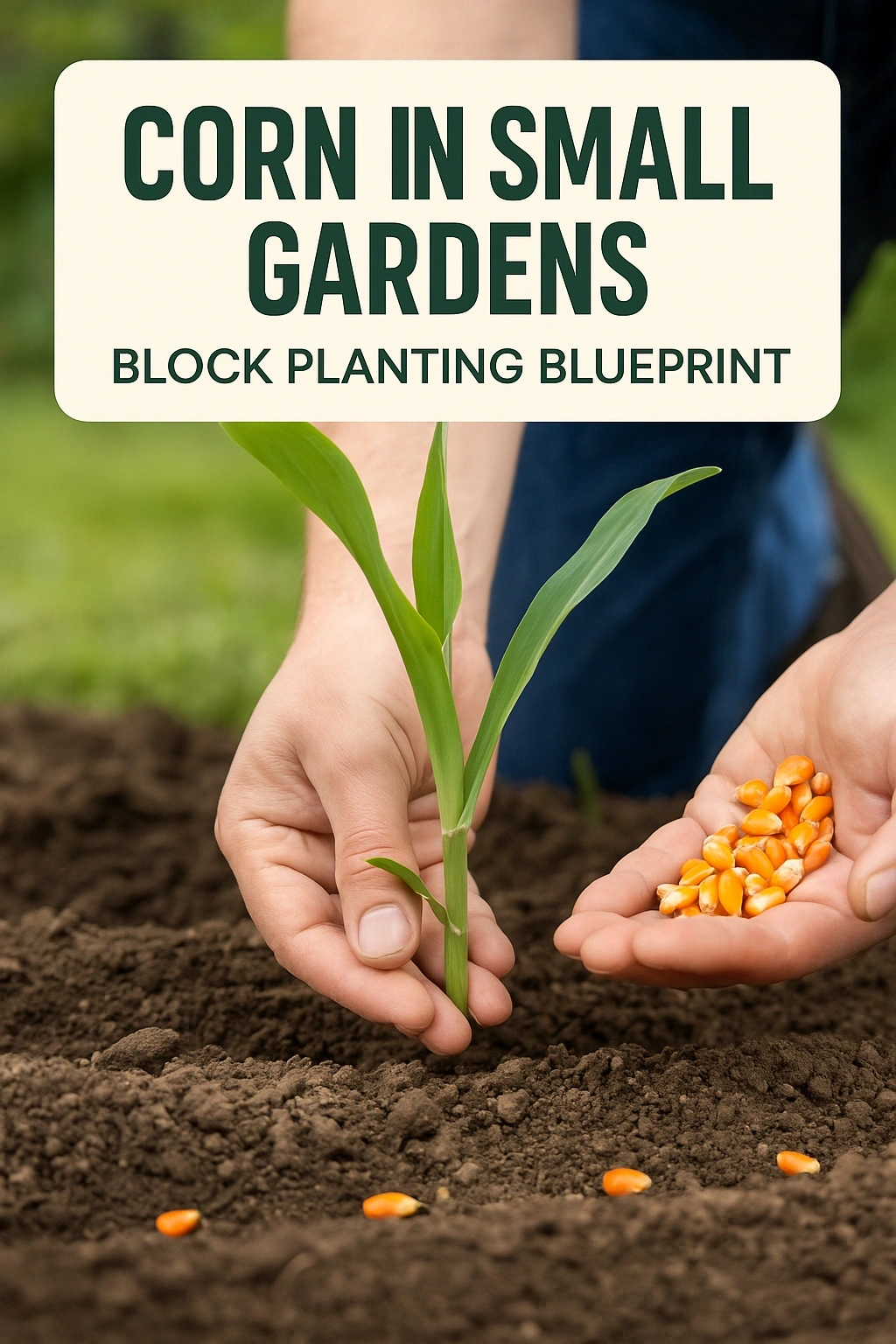
Growing corn in small gardens can seem like a daunting task, but with the right techniques and planning, you can cultivate a thriving crop even in limited space. This comprehensive guide explores the concept of block planting, offering practical strategies to maximize your yield and ensure that your corn grows robustly. Whether you’re a seasoned gardener or just starting, this blueprint will equip you with the knowledge to successfully integrate corn into your small garden.
Understanding Block Planting
Block planting is an efficient gardening method that involves grouping plants closely together in a specific area, promoting better pollination and maximizing space. For corn, this technique is particularly beneficial as it relies on wind for pollination. By planting corn in blocks rather than single rows, you enhance the chances of successful fertilization, leading to fuller ears of corn.
Choosing the Right Corn Varieties
Selecting the appropriate corn variety is crucial, especially in small gardens. Different types of corn serve various purposes, from sweet corn for fresh eating to field corn for animal feed. When choosing your corn, consider factors such as your climate, the length of your growing season, and your intended use.
Popular Corn Varieties for Small Gardens
- Sweet Corn: Ideal for fresh consumption, with varieties like ‘Sugar Buns’ or ‘Golden Bantam’ being popular choices.
- Popcorn: A delightful option for family fun, with varieties such as ‘Zebra’ and ‘Mushroom’ available.
- Ornamental Corn: Perfect for adding color and texture to your garden, varieties like ‘Blue Hopi’ or ‘Bloody Butcher’ are great selections.
Site Selection and Preparation
Choosing the right location in your garden is essential for successful corn growth. Corn thrives in full sunlight and requires ample space for its roots to develop. Look for an area that receives at least six to eight hours of direct sunlight daily. Once you have selected your site, prepare the soil adequately to promote healthy growth.
Soil Preparation Steps
- Testing Soil: Conduct a soil test to determine pH levels and nutrient content.
- Amending Soil: Incorporate organic matter such as compost or well-rotted manure to enhance soil fertility.
- Tilling: Loosen the soil to a depth of at least 12 inches to promote root growth.
Planting Corn in Blocks
Once your site is prepared, it’s time to plant. Block planting corn involves sowing seeds in a square or rectangular formation rather than in long rows. This method not only optimizes space but also encourages better air circulation and pollination.
Steps for Block Planting Corn
- Spacing: Plant seeds 8-12 inches apart in blocks that are at least four rows wide.
- Depth: Sow seeds 1-2 inches deep, depending on soil moisture and temperature.
- Watering: Ensure the soil remains consistently moist during germination.
Maintaining Your Corn Crop
Proper maintenance is vital for a successful corn crop. This includes watering, fertilizing, and managing pests and diseases. Corn requires regular care to thrive and produce high-quality ears.
Essential Maintenance Tips
- Watering: Corn needs about an inch of water per week, especially during the flowering stage.
- Fertilizing: Use a balanced fertilizer to promote strong growth, following the recommendations from your soil test.
- Pest Management: Monitor for common pests such as corn earworms and use organic methods when possible to control infestations.
Harvesting Corn
Knowing when to harvest corn is crucial to enjoying its sweet flavor at its peak. Harvesting too early or too late can affect the texture and taste of the corn.
Signs of Ripe Corn
- Silks: The silks should turn brown and dry out.
- Kernel Appearance: Press a kernel; if it releases a milky substance, it’s ready for harvest.
- Timing: Sweet corn is typically ready to harvest 18-24 days after the silks appear.
FAQs
Can I grow corn in containers?
Yes, corn can be grown in large containers. However, ensure the container is at least 5 gallons and provides sufficient sunlight and nutrients.
How much sunlight does corn need?
Corn requires full sunlight, ideally receiving six to eight hours of direct sunlight each day for optimal growth.
What is the best time to plant corn?
The best time to plant corn is after the last frost date in your area, typically in late spring when the soil temperature reaches at least 60°F (15°C).
How often should I water my corn?
Corn should be watered regularly to maintain consistent moisture, particularly during dry spells. Aim for about an inch of water per week.
What can I plant with corn for companion planting?
Companion plants for corn include beans, which can fix nitrogen in the soil, and squash, which can provide ground cover and reduce weeds.
Conclusion
Growing corn in small gardens using block planting techniques is not only feasible but also rewarding. By understanding the requirements of your chosen corn variety, preparing your soil, and implementing effective maintenance practices, you can enjoy a bountiful harvest. Embrace the journey of gardening, and let your small garden flourish with the vibrant growth of corn.
